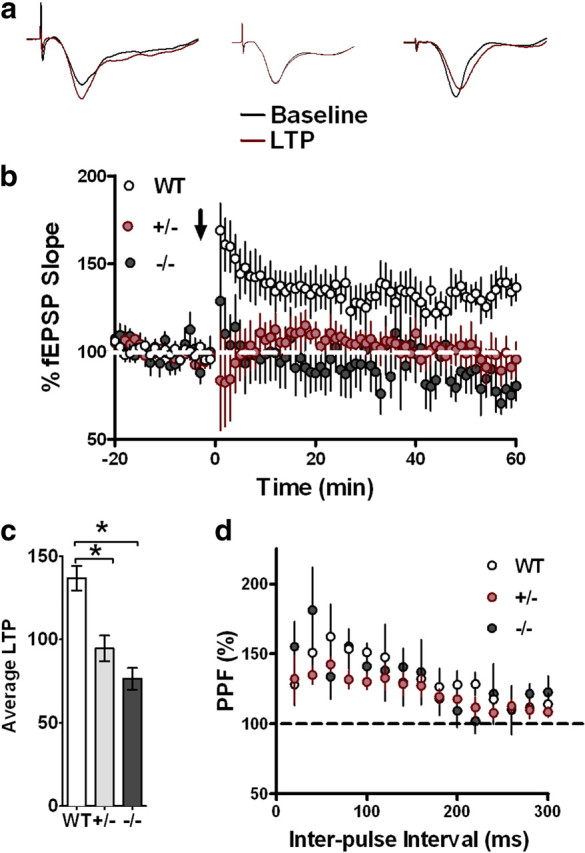Figure 4.

a, b, CX3CR1 deficiency leads to impairments in LTP. LTP was induced with HFS (2 1 s, 100 Hz bursts separated by 20 s; b, arrow) after 20 min of baseline recording, and changes in fEPSP slope are expressed as a percentage of baseline (a). b, Representative fEPSP traces taken from hippocampal slices of (left to right) wild-type, CX3CR1+/− and CX3CR1−/− mice. Both CX3CR1−/− (black) and CX3CR1+/− (red) have deficiencies in LTP of area CA1 compared to wild-type controls (white). c, The last 5 min of fEPSPs slope recordings were averaged for wild-type (n = 12), CX3CR1−/− (n = 10), and CX3CR1+/− (n = 9) mice (**p < 0.05). d, PPF was induced with the use of paired pulses given with an initial delay of 20 ms, and the time to the second pulse was increased 20 ms incrementally until a final delay of 300 ms was reached. There was no significant PPF differences between experimental groups. All data are presented as mean ± SEM. p < 0.01.
